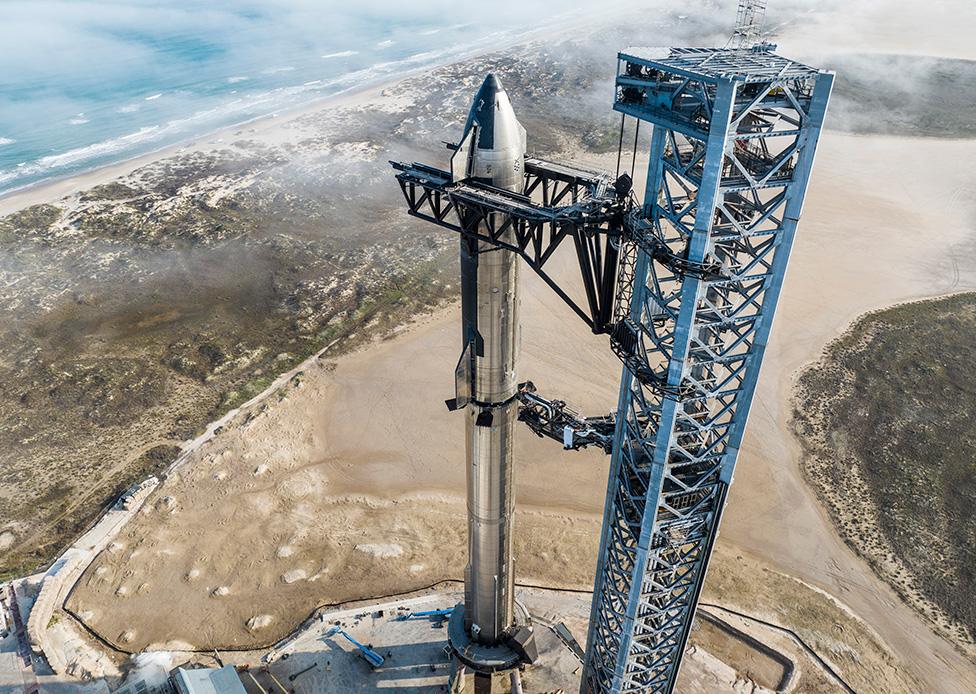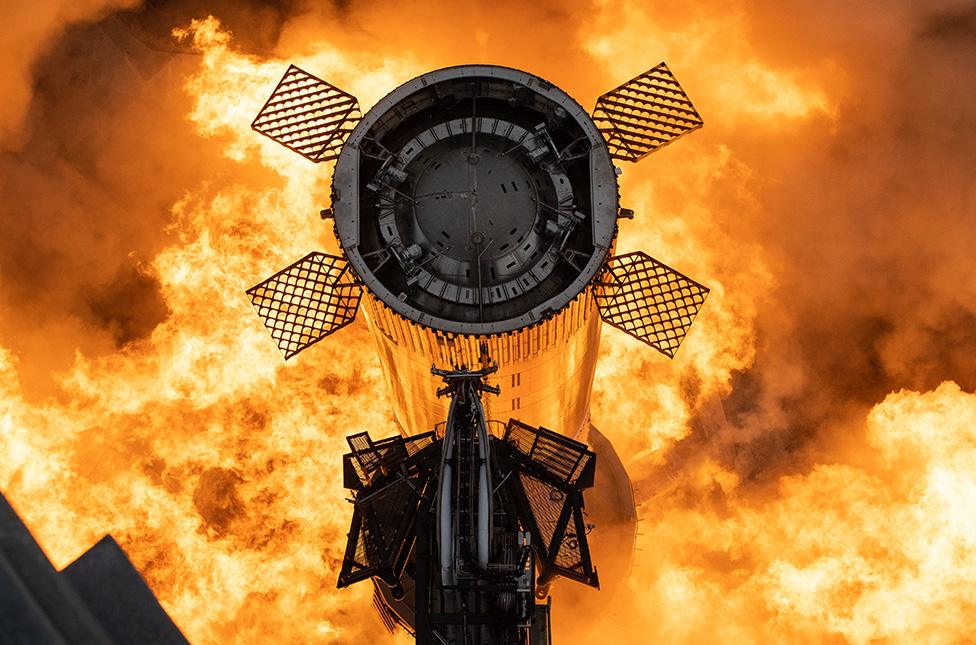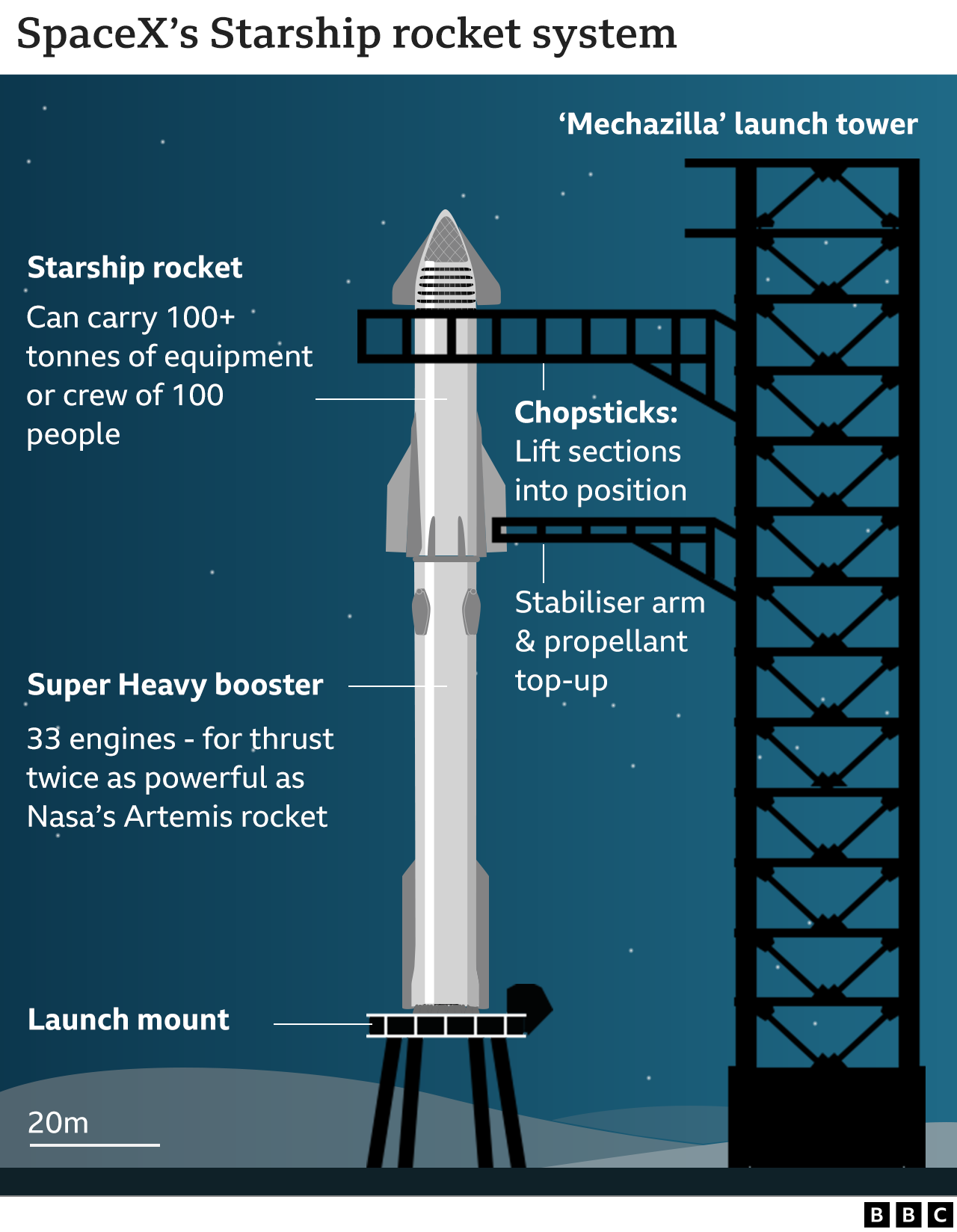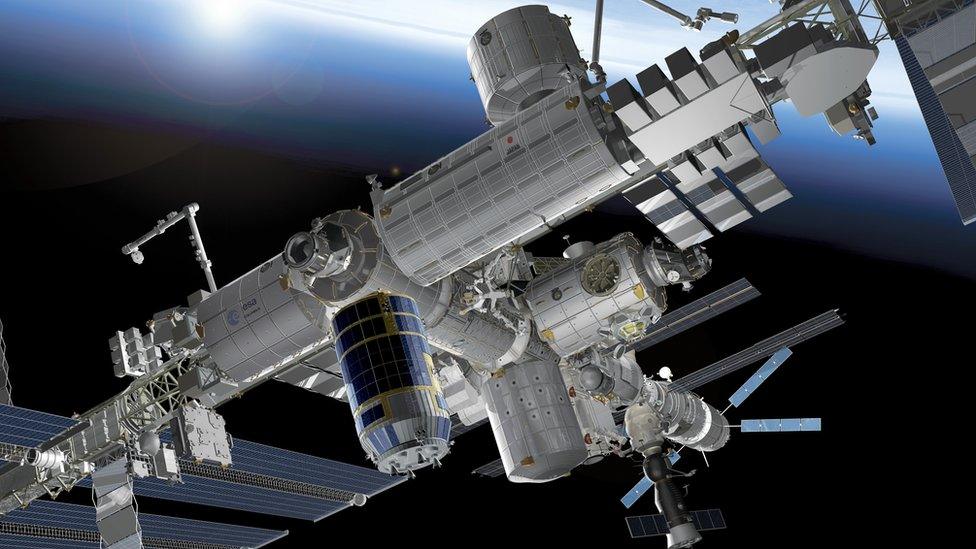SpaceX launch cancelled: Frozen 'pressurant valve' delays Musk's rocket
- Published
- comments

The giant Starship rocket on its launch mount
The most powerful rocket ever built was due to take flight today, but at the last minute its launch was called off.
The rocket, known as Starship, has been built by Elon Musk's SpaceX company.
Twitter boss Musk said on the social media platform that a "pressurant valve appears to be frozen", and that's why the launch couldn't take place.
It will now take a minimum of 48 hours (or two days) before they can try again.
Starship stands almost 120m (400ft) high and is designed to have almost double the thrust of any rocket in history.
The launch was due to lift off from Boca Chica in Texas, US. The uncrewed rocket was supposed to complete almost one circuit of the globe.
Why has the SpaceX Starship launch failed?
Mr Musk had warned that there could be problems with the launch. It's not uncommon for a rocket to experience some kind of failure on its initial outing.
"It's the first launch of a very complicated, gigantic rocket, so it might not launch. We're going to be very careful, and if we see anything that gives us concern, we will postpone the launch," he told a Twitter Spaces event.
Now the world's richest man says a valve, used to control pressure, has frozen.

The booster was held on the ground when its engines were ignited for a "static fire" test
SpaceX tried to blast off the Starship at 08:00 local time, around 2pm in the afternoon in the UK.
It was anticipated thousands of spectators would try to watch the launch.
What is the SpaceX rocket for?
The SpaceX rocket has been designed to be fully reusable. In the future, Mr Musk wants to be able to fly people and satellites to orbit multiple times a day in the same way a jet airliner might cross the Atlantic.
He believes the vehicle could bring in an era of interplanetary travel for ordinary humans.
The top segment of Starship has been tested previously on short hops, but this will be the first time it will go up with its lower stage.
This giant booster, called Super Heavy, was tested in February. However, the engines on that occasion were throttled back to half their capability.
If, as promised, SpaceX goes for 90% thrust when launched, the stage should deliver something close to 70 mega newtons.
This is equivalent to the force needed for almost 100 Concorde supersonic airliners at take-off.

What happens next for SpaceX after the failed launch?
If a future launch is successful, Starship will rise up with its 33 engines on the bottom of the methane-fuelled booster burning for two minutes and 49 seconds.
At that point, the two halves of the rocket will separate, and the top section, the ship, will push on with its own engines for a further six minutes and 23 seconds.
By this time, it should be travelling over the Caribbean and cruising through space more than 100km above the planet's surface.
SpaceX wants the Super Heavy booster to try to fly back to earth and come down vertically, hovering just above the Gulf's waters. It will then be allowed to topple over and sink.
The ship is aiming to re-enter the Earth's atmosphere after almost a full circle around the globe, coming down in the Pacific ocean - around 90 minutes after lift-off.
It's been given special protective tiling to cope with the immense heat it will experience during the descent back to earth.

Is SpaceX for passenger trips to Space?
In the longer term, SpaceX expects both the booster and the ship to make controlled landings so they can be refuelled and relaunched.
US space agency Nasa is working with SpaceX to develop a version of Starship that can land astronauts on the Moon.
Garrett Reisman, a SpaceX advisor and former astronaut, says Mr Musk has the ambition to go even deeper into the Solar System.
"He sees Starship as potentially [having] the capability to truly bring people on large scale to Mars.
"There's a lot of potential benefit, but there's also a lot of potential risk because this is very difficult. Nobody's built a rocket anywhere near this big - twice as big as the next nearest thing."
- Published20 November 2018

- Published16 February 2021

